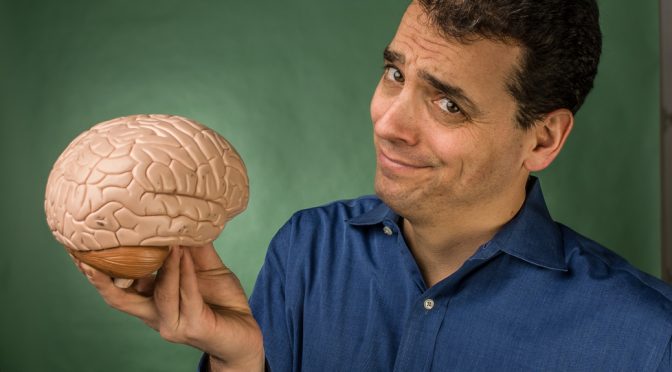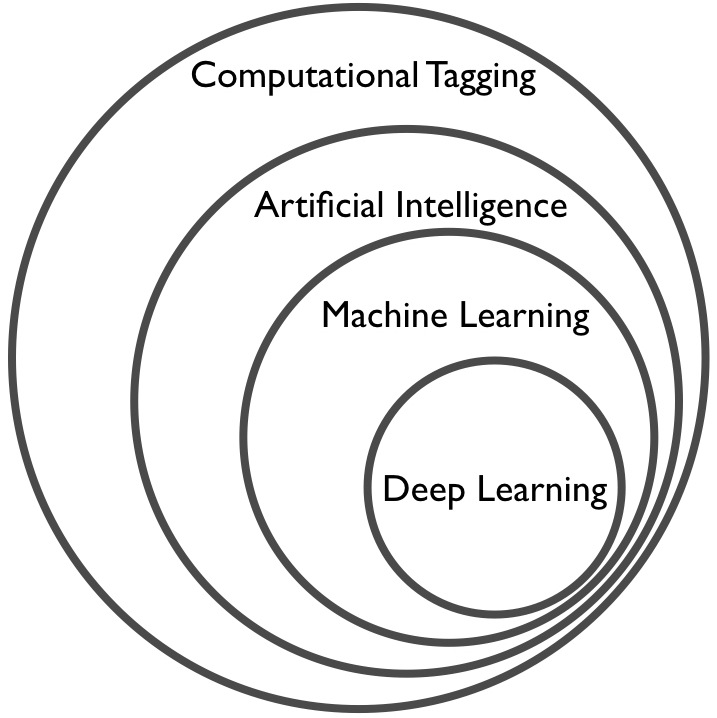This post is adapted from the forthcoming The DAM Book3.
There is a lot of hype and hazy discussion about the future of AI, but it’s often very loosely defined. In a previous blog post, I made the case for lumping a lot of this into a category I’m calling Computational Tagging. In this post, I’ll split that into some large component parts. (Read the next post here).
What’s the difference between Computational Tagging, Artificial Intelligence, Machine Learning, and Deep Learning?
While the definitions of these processes have a lot of overlap, we can draw some useful distinctions. Let’s use a Venn diagram to illustrate the relationships.
Computational tagging refers to any system of automated tagging that is done by a computer. This includes the metadata added by your camera. It also includes information like a Wikipedia page or other network-accessible information that could be added by simple linking.
Artificial Intelligence (AI) encompasses any computer technology that appears to emulate human reasoning. AI could be as simple as a set of rules that can create an intelligent looking behavior (e.g. a self-driving car could be taught the “rule” that you don’t want to cross a double yellow line.) AI also includes the more complex services outlined below.
Machine Learning (ML) is a subset of AI that is more complex. Instead of just following an established set of rules, in an ML environment, the system can be trained to discover the rules. An ML system for identifying species, for instance, uses a training set of tagged images to figure out what a Labrador retriever looks like.
Deep Learning (DL) is a specific type of ML that makes use of a predictive model in its learning process. This process actually mimics the way the brain works. In Deep Learning, the system does not just look at results, but it uses a predictive model to train itself. It is constantly testing a hypothesis against results, and adjusting the hypothesis according to this results.
Here’s how it works in your brain. The central nervous system is providing constant input stimulus. Your brain then makes constant predictions about what the next input should be. When the input does not match the prediction, it recalibrates. You experience this process when you taste something you expect to be sweet and it’s salty, or when you take a step and the level of the ground is not where you expect it to be.
Read the next post here.


